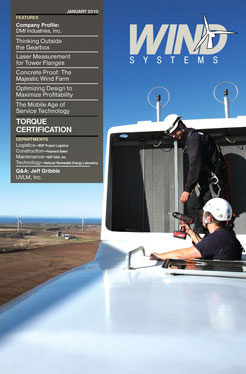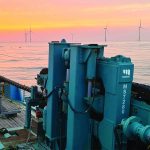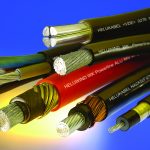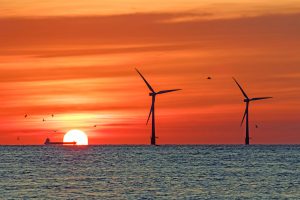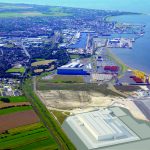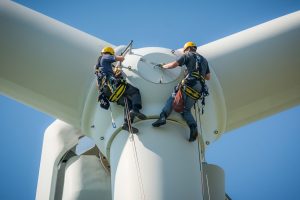The two largest wind turbines ever erected at the National Renewable Energy Laboratory’s (NREL) National Wind Technology Center (NWTC) towered into the sky this fall. A 1.5-MW turbine manufactured by General Electric was dedicated for research in November, and a 2.3-MW turbine manufactured by Siemens Power Generation was dedicated for research in October.
The U.S. Department of Energy (DOE) purchased the GE 1.5SLE turbine (referred to as the DOE 1.5) for long-term wind energy research and development activities. The DOE 1.5 allows NWTC and industry partners to conduct research to improve performance and reliability. The turbine, which is 119-m tall and has a 77-m rotor diameter, will be extensively instrumented to collect detailed data that will help researchers study the microclimate in which the turbine operates, the aerodynamics of its design, the effects of turbulence on its loads and performance, and how the combination of these factors may affect wind plant performance. The turbine will also be used to educate budding wind engineers and researchers from universities, laboratories, and companies nationwide.
The Siemens 2.3-MW turbine is part of a cooperative research and development agreement (CRADA) with Siemens Power Generation to conduct research and testing. At 131-m tall with a rotor diameter of 101-m, this turbine is among the largest land-based turbines deployed in the United States. Critical tests include structural, performance, modal, acoustics, power quality, and aerodynamics.
In addition to conducting research on the turbines, NREL is working with wind project developer RES Americas under a CRADA to study the non-turbine components of wind energy systems. Work to be conducted during the next three years includes study of the design and performance of turbine foundations and thermal performance of underground electrical cables to increase their reliability and reduce installation and maintenance costs. Because the turbines are so large, their custom-designed foundations contain between 400 and 800 tons of steel rebar and concrete. Data collected on the foundations of these turbines will result in some of the first-ever measurements of structural loads inside and under an operating wind turbine. In addition to its research on foundation and cables, RES will also install multiple brands of sensors, data loggers, and wireless communication systems at the NWTC for a “side-by-side” comparison of their performance.
Beyond these results, the commissioned turbines will generate clean electricity to meet the laboratory’s aggressive sustainability goals, including the reduction of greenhouse gas emissions, for its expanding research campus and support facilities. The new turbines are expected to generate twice as much energy as the NWTC consumes. Work toward an agreement to allow the export of surplus power to the local utility grid is underway.
NREL’s wind center, nestled at the base of the Rocky Mountains, is located just south of Boulder, Colorado. It is DOE’s premier wind energy research and development facility. At the NWTC, NREL researchers work side by side with industry partners to create the next generation of wind energy systems.
















